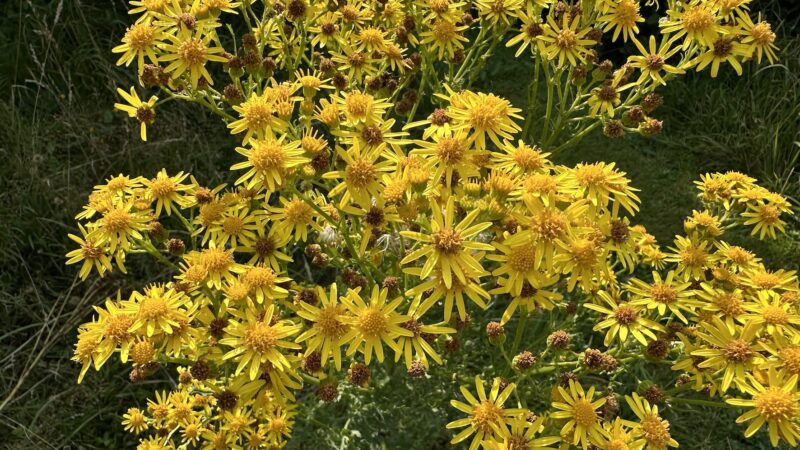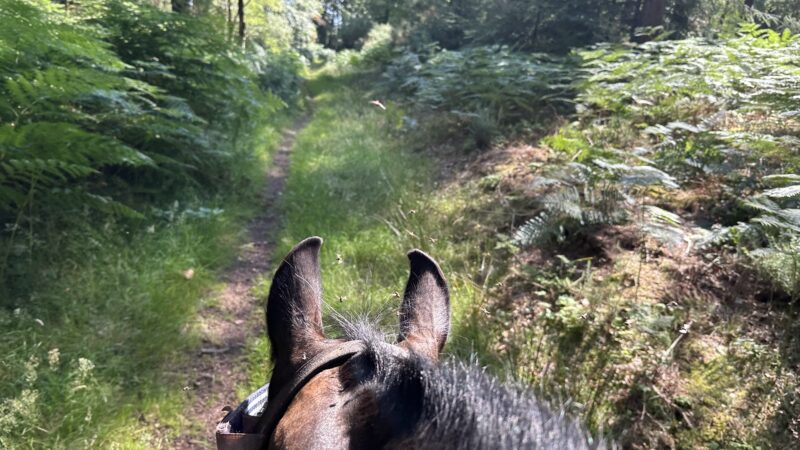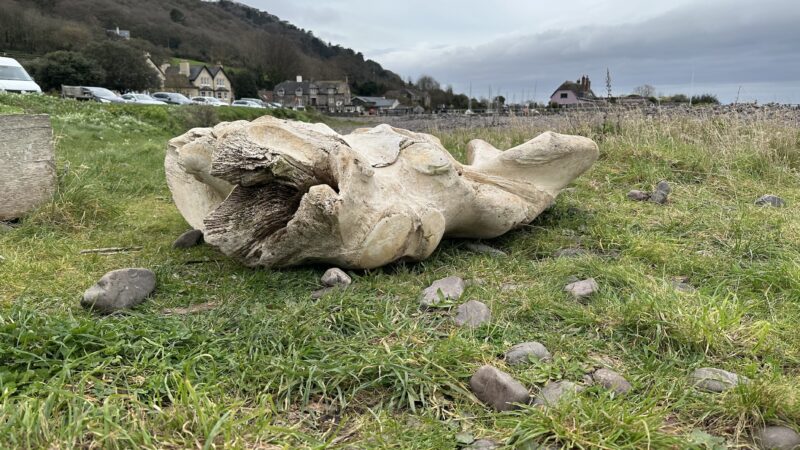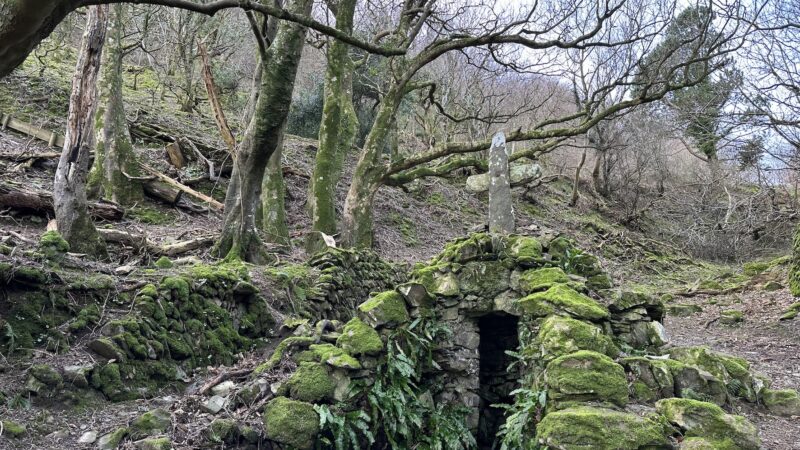Checking nestboxes brings some surprises
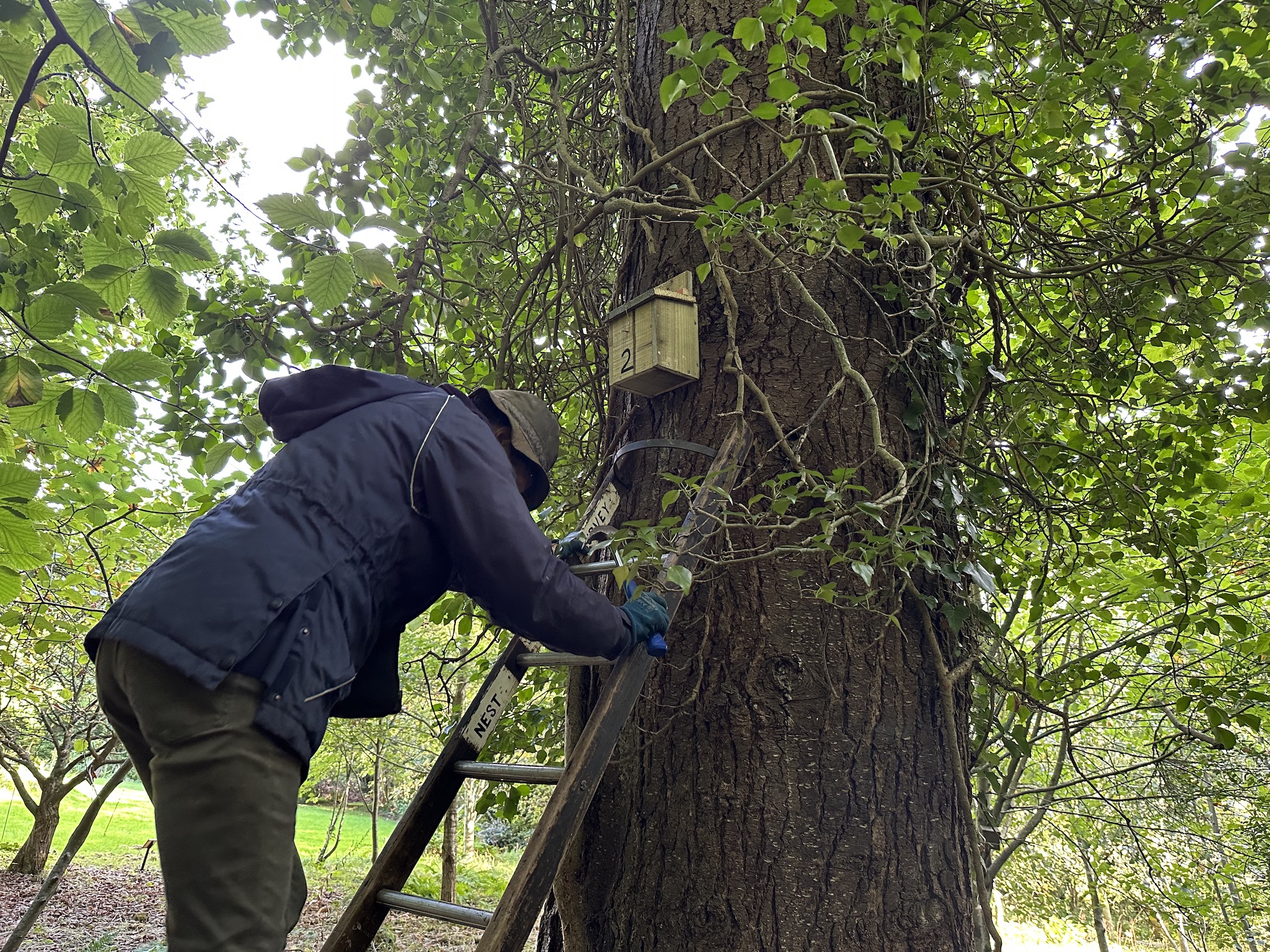
This is the season for clearing out nestboxes now that the breeding season is finished and the young are fledged. Nests so painstakingly constructed only a few months before need to be discarded to prevent mites and viruses accumulating next spring. It’s not just throwing away – this is a time of discovery that reveals which creatures visited the boxes and whether they bred successfully.
On Exmoor, the local natural history society maintains nearly 200 bird boxes across nine sites near Porlock. Volunteers are in the process of checking, recording and clearing the contents, a task that involves wading through rocky streams and searching for boxes hidden behind extra‑luxuriant foliage produced by this year’s wet summer. It turns out that several are missing, having been taken down deliberately, presumed stolen.
When found, there’s often a surprise inside. Last year, dormice nested in one box, and a brown long-eared bat was found inside another. When it’s my turn to go up the ladder, I ease the lid off gently. Woodlice scurry from its underside, along with a large house spider, which plops with the weight of a fallen blackberry into the leaf litter below. Cautiously, I slide the cleaning tool inside and hook out a nest, which I bring down for identification.
It’s a thick, flattened mat of moss and lichen, intermingled with sheep’s wool and cow hair. There’s a tiny yellow breast feather caught on one side. When we try to pull it apart, the meshed strands hold tight, showing it’s been woven – a possible sign of a great tit’s nest, although views vary as to whether great tits or blue tits are more likely to weave.
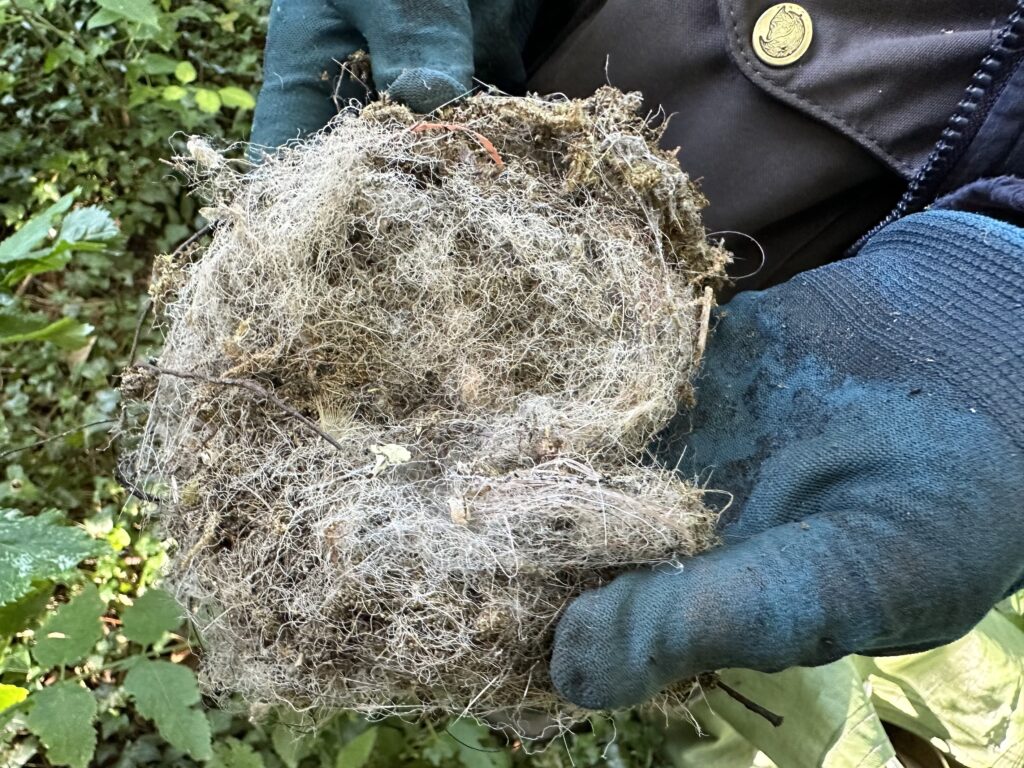
Many of the boxes are empty and unused, but not all are untouched. One has two new holes drilled into the side – the work of a woodpecker, probably a greater-spotted one. It’s not clear in this case what the bird was after. These woodpeckers will eat young birds, but there was no nest here. Perhaps there were insects inside that it pecked out.
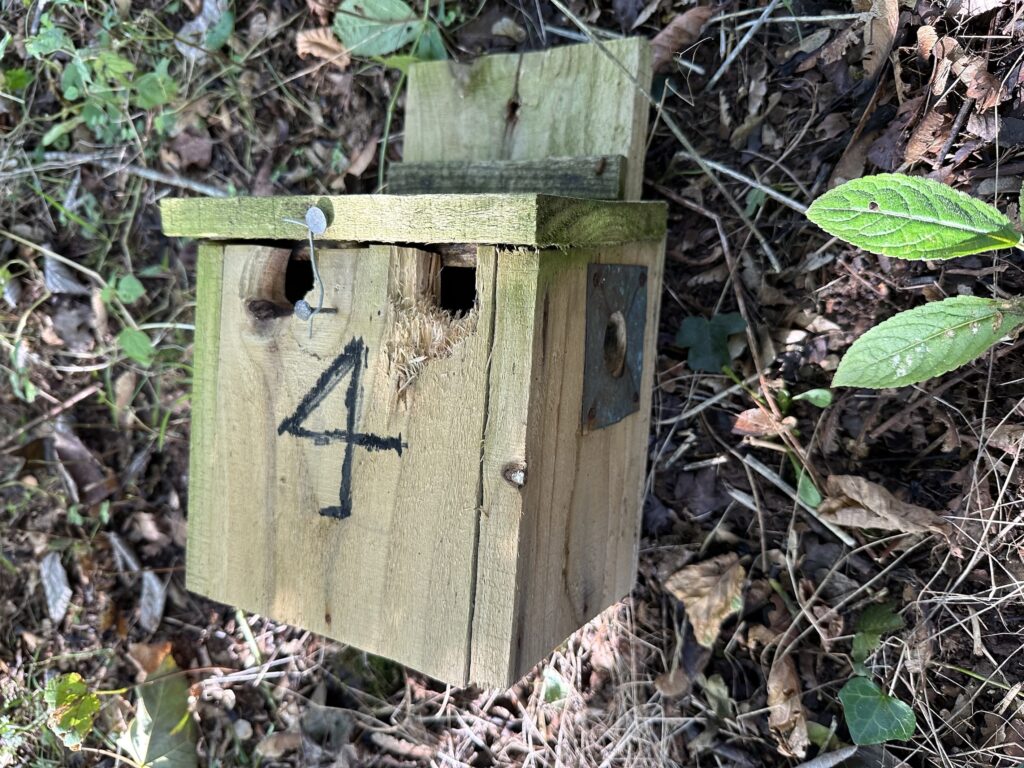
We replace the box with a new one and move on, as there are still many to do. In summer 2022, pied flycatchers nested in 40 of the boxes, and members hope the numbers will prove similar this year.
First published in The Guardian’s Country Diary on 5 October 2023.
